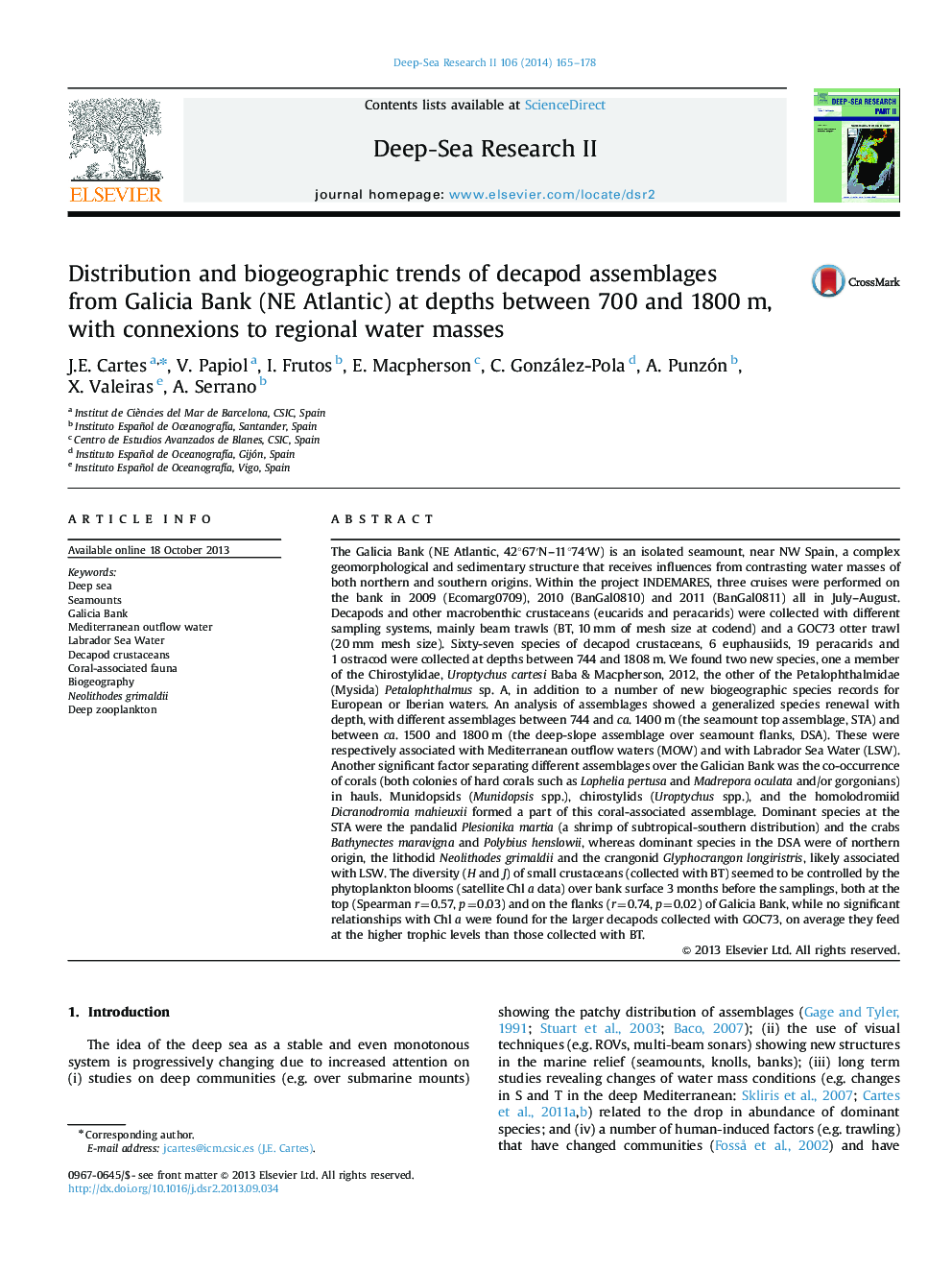| کد مقاله | کد نشریه | سال انتشار | مقاله انگلیسی | نسخه تمام متن |
|---|---|---|---|---|
| 4536335 | 1626434 | 2014 | 14 صفحه PDF | دانلود رایگان |

The Galicia Bank (NE Atlantic, 42°67′N–11°74′W) is an isolated seamount, near NW Spain, a complex geomorphological and sedimentary structure that receives influences from contrasting water masses of both northern and southern origins. Within the project INDEMARES, three cruises were performed on the bank in 2009 (Ecomarg0709), 2010 (BanGal0810) and 2011 (BanGal0811) all in July–August. Decapods and other macrobenthic crustaceans (eucarids and peracarids) were collected with different sampling systems, mainly beam trawls (BT, 10 mm of mesh size at codend) and a GOC73 otter trawl (20 mm mesh size). Sixty-seven species of decapod crustaceans, 6 euphausiids, 19 peracarids and 1 ostracod were collected at depths between 744 and 1808 m. We found two new species, one a member of the Chirostylidae, Uroptychus cartesi Baba & Macpherson, 2012, the other of the Petalophthalmidae (Mysida) Petalophthalmus sp. A, in addition to a number of new biogeographic species records for European or Iberian waters. An analysis of assemblages showed a generalized species renewal with depth, with different assemblages between 744 and ca. 1400 m (the seamount top assemblage, STA) and between ca. 1500 and 1800 m (the deep-slope assemblage over seamount flanks, DSA). These were respectively associated with Mediterranean outflow waters (MOW) and with Labrador Sea Water (LSW). Another significant factor separating different assemblages over the Galician Bank was the co-occurrence of corals (both colonies of hard corals such as Lophelia pertusa and Madrepora oculata and/or gorgonians) in hauls. Munidopsids (Munidopsis spp.), chirostylids (Uroptychus spp.), and the homolodromiid Dicranodromia mahieuxii formed a part of this coral-associated assemblage. Dominant species at the STA were the pandalid Plesionika martia (a shrimp of subtropical-southern distribution) and the crabs Bathynectes maravigna and Polybius henslowii, whereas dominant species in the DSA were of northern origin, the lithodid Neolithodes grimaldii and the crangonid Glyphocrangon longiristris, likely associated with LSW. The diversity (H and J) of small crustaceans (collected with BT) seemed to be controlled by the phytoplankton blooms (satellite Chl a data) over bank surface 3 months before the samplings, both at the top (Spearman r=0.57, p=0.03) and on the flanks (r=0.74, p=0.02) of Galicia Bank, while no significant relationships with Chl a were found for the larger decapods collected with GOC73, on average they feed at the higher trophic levels than those collected with BT.
Journal: Deep Sea Research Part II: Topical Studies in Oceanography - Volume 106, August 2014, Pages 165–178